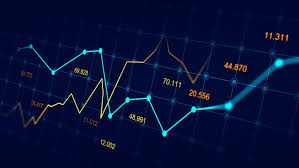
Understanding Forex Trading Systems: A Comprehensive Guide
Navigating the world of forex can be overwhelming, especially with the plethora of trading systems available. A reliable forex trading system Trading Broker Global can significantly enhance your trading experience. This article aims to provide an in-depth look into forex trading systems, explaining their components, how they work, and tips for selecting one that suits your trading needs.
What is a Forex Trading System?
A forex trading system refers to a set of rules and guidelines that traders follow to determine when to enter and exit trades. These systems may be based on technical analysis, fundamental analysis, or a combination of both. The goal of a trading system is to provide a clear framework to help traders make informed decisions in the highly volatile forex market.
Key Components of a Forex Trading System
A well-structured forex trading system typically includes the following components:
- Market Analysis: Traders can use various analysis methods, such as technical analysis (using charts and indicators) or fundamental analysis (examining economic news and data).
- Entry and Exit Rules: These specify the criteria for entering and exiting trades. They can be based on specific indicators, price levels, or price patterns.
- Risk Management: This involves setting stop-loss orders, position sizing, and determining the amount of capital to risk on each trade.
- Trading Journal: Keeping a record of trades to analyze performance and improve future trading decisions.
Types of Forex Trading Systems
There are numerous types of forex trading systems, each catering to different trading styles and objectives. Here are a few common types:
1. Automated Trading Systems

Automated trading systems use algorithms to make trading decisions based on predefined rules. These systems can execute trades automatically, allowing traders to capitalize on market opportunities without needing to be present at their computers.
2. Manual Trading Systems
With manual trading systems, traders rely on their judgment and analysis to make trading decisions. This approach requires a deeper understanding of market dynamics and a strong commitment to learning.
3. Scalping Systems
Scalping systems focus on making small profits from numerous trades throughout the day. Scalpers typically hold positions for a short period and rely on quick market movements.
4. Swing Trading Systems
Swing trading involves holding positions for a few days to capture larger price moves. This trading style requires patience and a good understanding of market trends.
5. Position Trading Systems
Position traders take a long-term approach, holding trades for weeks, months, or even years. They focus on significant price movements influenced by macroeconomic factors.

How to Choose the Right Forex Trading System
Selecting the right trading system can significantly impact a trader’s success. Here are some factors to consider when making your choice:
- Trading Style: Identify your trading style (e.g., day trading, swing trading, etc.) and choose a system that aligns with it.
- System Performance: Review backtesting results to gauge the system’s historical performance and understand its potential risks and rewards.
- Ease of Use: Ensure the system is user-friendly and understandable. Complexity can lead to confusion and mistakes.
- Support and Updates: Look for systems that offer good customer support and regular updates to keep the system relevant in changing market conditions.
- Risk Management: A good trading system should also include risk management strategies to help protect your capital.
Implementing Your Forex Trading System
Once you’ve chosen a trading system, it’s time to implement it. Here are some tips for effective implementation:
- Start with Demo Trading: Before risking real money, use a demo account to practice and understand the system thoroughly.
- Follow the Rules: Stick to the system’s rules and avoid emotional decision-making. Consistency is key to success.
- Keep a Trading Journal: Document your trades, strategies, and emotions during trading sessions. This reflection will help improve your approach over time.
- Evaluate Performance: Regularly assess your trading performance and make necessary adjustments to your system or strategy.
Common Mistakes to Avoid
To maximize your chances of success, avoid these common trading mistakes:
- Ignoring Risk Management: Never underestimate the importance of risk management. This is critical for preserving your trading capital.
- Overtrading: Resist the urge to trade too frequently or chase losses. Stick to your trading plan and focus on quality over quantity.
- Pretending to Know Everything: The forex market is complex, and no trader is infallible. Always be open to learning and adapting your strategies.
- Neglecting Psychological Preparation: Trading can be emotionally taxing. Ensure you’re mentally prepared to handle the psychological aspects of trading.
Conclusion
A well-defined forex trading system is an essential tool for any trader seeking success in the forex market. By understanding the components, evaluating different types of systems, and implementing effective strategies, traders can enhance their decision-making processes and improve their overall performance. Remember that consistent practice, discipline, and a willingness to learn from both successes and failures will ultimately lead to long-term trading success.
Leave A Comment